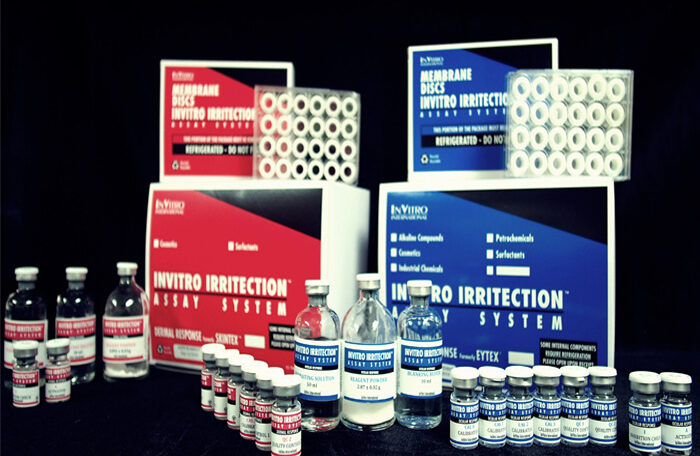Ocular and dermal irritants can cause significant damage to the human body. In order to minimize this risk, it is important to identify and test potential irritants before they are introduced into products that come into contact with human skin or eyes. The Ocular and Dermal Irritection® Assay Systems are advanced in vitro testing methods that help predict the potential ocular and dermal irritancy of chemicals and product formulations.
Ocular Irritection®
The Ocular Irritection Assay is a reliable and accurate in vitro test that predicts the potential for eye irritation caused by chemical compounds. The assay uses a reagent solution that mimics the biochemical structure of the cornea to detect changes caused by irritants. The test article is applied to a membrane disc that controls the delivery to the reagent solution. Optical density readings are taken by a photospectrometer to measure changes in protein structure caused by the irritant. The results are compared to those produced by standard chemical irritants to calculate an irritancy score that predicts the potential ocular irritancy of the test material.
Dermal Irritection®
The Dermal Irritection Assay System is an advanced in vitro testing method that predicts the potential for dermal irritancy caused by chemical compounds. The assay uses a membrane substrate that has been modified with a mixture of keratin, collagen, and an indicator dye covalently crosslinked to it, as well as a reagent solution consisting of a highly organized globulin/protein macromolecular matrix. The irritant is applied to the membrane disc, causing the keratin and collagen to release the bound indicator dye and induce changes in conformation in the globular proteins found in the reagent solution. The extent of dye release and protein denaturation is measured by changes in optical density of the reagent solution at 450 nm (OD450). The results are compared to those produced by standard chemical irritants to calculate an irritancy score that predicts the potential dermal irritancy of the test material.

In vitro testing methods like the Ocular and Dermal Irritection® Assay Systems provide reliable and accurate predictions of potential ocular and dermal irritancy caused by chemical compounds. By using these advanced testing methods, companies can identify and eliminate potentially harmful chemicals before they are used in products that come into contact with human skin or eyes. This reduces the risk of injury and improves the safety of products for consumers.
For more information including outlines, studies, or quotes click here.